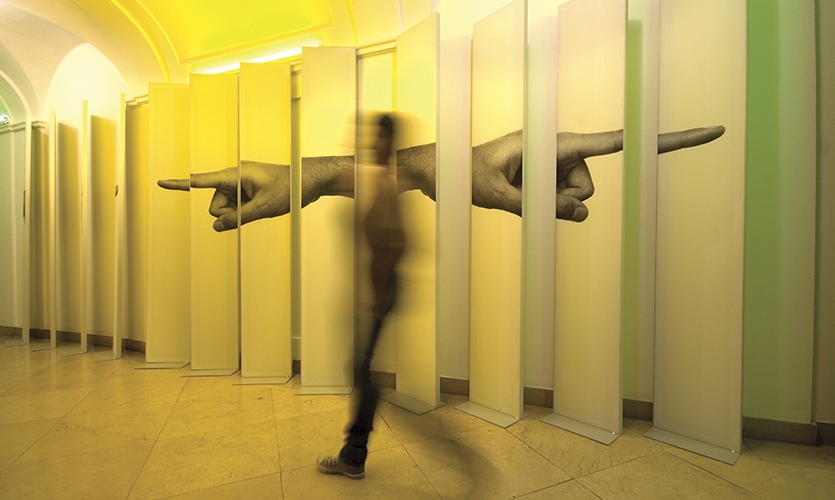
I belong to a sinister minority group – I’m left-handed. We make up around one in ten of the world’s population, although apparently, about a third of people are cross-dominant, or ambilateral, favouring different hands for various tasks. I have no idea of the number of PR practitioners who may be left-handed as it isn’t considered a relevant fact in most surveys about the occupation. It isn’t a diversity factor in that sense.
If you are left-handed, on the whole you learn to orientate yourself to a right-handed world. I’ve never been one much for special treatment or left-handed equipment, but there are times when we face discrimination from presumptions of right-handedness (normally for minor matters, such as pens chained to counters).
I’m not equating being left-handed to the far more serious cases of discrimination for race, gender, disability and religion for example. But I am able to recognise ‘the other’ in a world that frequently doesn’t even notice that their way is not the only way.
Of course, things aren’t as bad as they used to be. I was never forced to write right-handed as was the case for many children. But left handedness continues to have many negative cultural associations. We are seen as awkward or clumsy (gauche in French), crooked (mancino in Italian), as linguistically, being left-handed connects to many insults. Indeed, the Latin, sinister denoting on the left side, became connected with malice, ill-will, unlucky, even illegitimacy with the ‘bend sinister‘ in heraldry.
As a minority, I prefer not to join a lefties club and have never celebrated left handers’ day (it’s August 13 if you’re interested) or pointed out those who are famous and left-handed (from Prince William to Barrack Obama if you care).
To be honest, I feel much the same about women’s groups and remain to be convinced that grouping people into various segments or intersections is always that helpful. The problem as I see it, is that segmentation is only a small step away from stereotyping, a term first used by Walter Lippmann in his book, Public Opinion.
Stereotyping is about seeing differences, which can then lead to prejudice and discrimination. Wikipedia‘s entry on stereotypes relates these three concepts as a tripartite of cognitive, affective and behavioural reactions – that is expectations and beliefs, emotional responses and action in response to attributing characteristics to particular groups of people.
Stereotypes don’t necessarily work in a negative way – and, that can be the dangerous thing when one grouping is seen as superior to another and hence gains favourable attention. So the world is set up to the benefit of being right-handed, and those of us who are ‘other’ need to accommodate to it. That’s frequently the case with being female, and any attempt to argue otherwise is negatively labelled as feminist, ignoring the fact that noting discrimination and advocating a feminist perspective is about equality, not favouritism.
Women should not have to be better than men to receive an equal position in society; women should have the right to be as incompetent as men if we’re being equal about things. No-one would ever argue that I should be paid less than someone who is right-handed, and I can’t think of a time when I have ever had to prove I am better than the majority norm because I write with my left hand. But that’s the position often articulated about equal pay and opportunity for women or other sectors of society that face discrimination.
It is quite simply stupid – and often illegal – to discriminate in pay or career progression on the basis of gender (and many other dimensions).
Talent comes in many shapes and sizes and should be recognised and rewarded accordingly.
If we return to the above hierarchy of effects model – we don’t really need a #MakeItHappen awareness initiative or special women’s editions of PR Week to know that discrimination occurs, in PR and wider society. To be frank, communications campaigns aren’t necessary for people to feel it is ridiculous that this debate about work based equality continues some 45 years after the Equal Pay Act became law in the UK in 1970. That only leaves action – and here I don’t mean setting up special groups, holding conferences and otherwise talking about the issue.
Despite Grazia claiming its Mind the Pay Gap Campaign has helped the UK government to introduce mandatory pay audits for organisations employing more than 250 people – this is not yet law and may get lost in the run up to the May general election. It will also not provide insight for the majority of employers, and will rely on public pressure and some legal action when gaps can be proven to be discriminatory.
Actually, as PR practitioners we have a better position than many occupations to address this issue where it matters – within organisations. We have access to information, and increasingly, have the internal influence to address issues. Let’s be corporate activists and investigate pay differentials within our employers and raise the matter with clients. Those in PR consultancies can directly address the matter as there can be little argument about the nature of work here that necessitates parity of pay and conditions.
We should refuse to be the voice of platitudes about treating staff equally until and unless we know this to be true. No obfuscating and rhetorical games to dodge the issue.
The Equality and Human Rights Commission has published an Equal Pay Audit Toolkit – a useful start although the most important part of which is missing, Step 6 – to implement an equal pay action plan to reach and maintain a fair system.
Intentions are not enough and we should stop side-stepping the issue and start today to pay fairly and equally the men and women that we recruit, and those we already employ. Anything less just wouldn’t be right.
